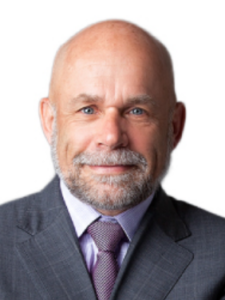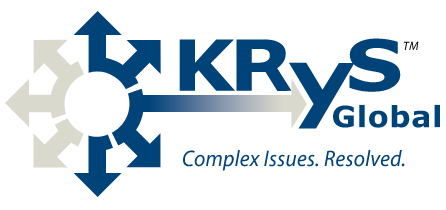Quick search
CTRL+K
Quick search
CTRL+K


Since 2010, the Global Law Experts annual awards have been celebrating excellence, innovation and performance across the legal communities from around the world.
posted 2 years ago
Originally posted on KNECT365.com, in Asset Recovery Magazine Vol. 2
Written by Kenneth Krys in April 2019
I read with interest a weekend interview in the Wall Street Journal on December 1–2, 2018 titled “The Amazing Madoff Clawback”. The interview is with Mr. Irving Picard, the court-appointed trustee of Bernard L. Madoff Investment Securities LLC, who oversees the recovery of assets stolen by Bernard L Madoff, currently serving a 150-year sentence for running the largest Ponzi scheme in history, and David Sheehan, a senior partner in Baker Hostetler who leads the litigation strategy. The interview explores how the two lawyers have recovered 75 cents on the dollar of the money Madoff stole – many times more the usual rate in such cases.
That article made me wonder whether there was a different story to be told from the feeder funds’ perspective. The feeder funds did not have the good fortune to have a multi-billion dollar Picower-type settlement nor an organization like the Securities Investor Protection Corp to pay the bill for the liquidator’s fees and expenses. Indeed, Mr Picard was something of an adversary to the feeder funds, having filed claims in the Southern District of New York against them for six years of redemptions, notwithstanding that many of these feeder funds were net losers in Madoff. In many instances, the defrauded investment in Madoff Ponzi scheme represented the feeder funds’ largest, if not only asset. This meant there was limited or no assets to take on Irving Picard and his army of lawyers, who had unlimited resources on their side.
Fairfield Sentry Ltd., incorporated in the British Virgin Islands (BVI), was the largest of the feeder funds to invest in Bernard L. Madoff Investment Securities LLC. As at 31 October 2008 about 95% of its assets, amounting to some US$7.2 billion, were invested with Madoff. Fairfield Sentry was put into liquidation in July 2009, eight months after Madoff was but into bankruptcy. Its two underlying feeder funds, Fairfield Sigma Ltd and Fairfield Lambda Ltd, were also put into liquidation.
There were also no known assets available to the Fairfield funds. The only cash comprised $71 million and it was subject to a freezing injunction.
The claims by Irving Picard were the first priority. Without a resolution, in theory, any recoveries the Liquidators made would only benefit the Madoff Trustee. With his global reach, it was likely that had the Liquidators been successful in making realisations, Mr Picard would have been able to enforce against them, almost in whatever foreign jurisdiction this occurred. With limited resources to pursue and defend claims, spending the money to benefit the Madoff Trustee was not a viable objective. But more difficult, we had no tangible money or assets to settle his claim.
That is where ingenuity came in. We knew that we ourselves had clawback claims against the redeeming investors and former investors of Fairfield, somewhat akin to the clawback claims which were being made against the direct Madoff investors by Picard. We also had potential claims against some of the professional advisors. We knew that by working cooperatively with the Madoff Trustee, and supporting his subsequent transferee claims against our same redeemers, whilst we might forego some of our potential recoveries we might also bring in some significant collections. The last hurdle was cash. The Madoff Trustee wanted the $70 million in the Irish account as a non-negotiable term, notwithstanding that we did not have access to those funds due to the freezing injunction. The Liquidators persuaded Picard to allow Fairfield a SIPC claim of $230 million as a part of a complex settlement agreement with him, which included Picard and the Liquidators sharing proceeds of certain of each other’s litigation recoveries. Now, at that time, allowed SIPC claims in BLMIS were being traded on the secondary claims market at around 30% of their value, therefore an allowed $230 million claim could be traded for a value of about $70 million, the cash amount that Picard was insisting on as part of a settlement. The Liquidators also were able to obtain Irving Picard’s positive support to obtain recognition in the United States of the Fairfield Funds’ BVI liquidation proceedings pursuant to Chapter 15 of the U.S. Bankruptcy Code, something which may have been nigh on impossible to achieve had Picard objected to the Liquidators’ petition.
Having locked up the Picard claims and protected themselves from any further risk in the United States, the Liquidators could focus on Fairfield’s other assets: the new SIPC claim of $230 million and the Irish bank account. Each would require a different degree of perseverance and creative thinking.
Recovering Fairfield’s cash of $71 million in Citco Bank Ireland proved problematic. In the days following the Madoff collapse, an investor, Stichting Shell Pensioenfonds (Shell), a Dutch pension fund incorporated in the Netherlands, had submitted a redemption request for its investment of $45 million plus interest. Days later, Shell applied in the Amsterdam District Court for permission to obtain a pre-judgment garnishment or conservatory attachment over all assets of Fairfield Sentry held by Citco Bank up to a value of US$80m. An order in those terms was made on the following day. In accordance with that order, three separate attachments were made totaling about US$71m. Another investor, a Panamanian entity, also sought relief in the Netherlands. Efforts by Fairfield’s directors, prior to the Liquidators’ appointment, to set aside the injunction in Amsterdam had failed. Legal proceedings brought by the Liquidators to have themselves recognized in Ireland, while successful, did not result in the stay being lifted. The risk was that if the two investors were successful, they would be able to collect on the encumbered bank account ahead of and to the detriment of the remaining shareholders.
Lead counsel in the BVI convinced the Liquidators to file an anti-suit injunction in the BVI restraining Shell from prosecuting its proceedings in the Netherlands and requiring it to take all necessary steps to procure the release of the attachments. While initially denied by the High Court of BVI, the Liquidators were successful in reversing this decision on appeal and subsequently reconfirmed this in the Judicial Committee of The Privy Council (JCPC), the court of final appeal for the UK overseas territories and Crown dependencies, including BVI. The result was that Shell withdrew from prosecuting its claim in the Netherlands, and more importantly, released its attachment on the Irish bank account.
The admitted claim in the Madoff bankruptcy also became an opportunity to bring in additional recoveries to creditors and shareholders of Fairfield. The timing of the negotiating the admitted SIPC claim of $230 million and the prospective agreement to sell it at 32.125% occurred just days before the infamous Picower recovery. When the $7.2 billion settlement was made public, the value of the SIPC claims almost doubled overnight, meaning that the sale of the SIPC claim at 32.125% was now woefully at an undervalue.
A critical provision of the prospective sale contract, drafted by US counsel, was that it was subject to approval of the BVI Court and U.S. Bankruptcy Court. Clearly, a sale of the SIPA claim at the now abysmal price of 32.125% was not in the interest of the stakeholders. Despite this, the BVI Court approved the sale, on the basis that the Liquidators had entered the contract in good faith and that at the time the contract was entered into, the proposed sale was in the best interest of the estate. The BVI Court, however, gave the Liquidators permission to seek direction
from the U.S. Bankruptcy Court.
It took a while, but eventually the United States Courts of Appeals for the Second Circuit held that the Liquidators were not bound by the terms of the trade confirmation and remanded the matter to the U.S. Bankruptcy Court for reconsideration, directing it to assess the sale contact pursuant to section 363 of the U.S. Bankruptcy Code which requires amongst other provisions, that the Liquidator be able to demonstrate a “substantial business justification” for the sale. Ultimately the U.S. Bankruptcy Court disapproved the contract, and that determination was then upheld by the District Court and Second Circuit, with, as the final act in this story, the U.S. Supreme Court denying review of the Bankruptcy Court’s decision in October 2017. Accordingly, the Liquidators were permitted to hold the SIPC claim, benefit from Mr. Picard’s recoveries and recover another $100 million for creditors and shareholders of Fairfield.
To date the Liquidators of Fairfield have recovered assets nearing $500 million. They have paid all the funds’ trade creditors, except that which is due pursuant to the Picard settlement, and started distributing monies to the funds’ registered shareholders. While $500 million is a fraction of the $13 billion recovered to date by Picard, it is difficult to conduct a meaningful comparison of success in the Madoff bankruptcy to the Fairfield liquidation. The means of adjudicating claims and paying victims is different in the two jurisdictions. The Madoff Trustee pays victims based on net losses and excludes the claims of the feeder funds’ investors. The Liquidators pay shareholders based on the number of shares held as at the date of their appointment.
Indeed, it may well be too early to do that comparison. The story’s end, at least from Fairfield’s perspective, remains unfinished and unwritten. Despite the litigation being pursued for almost a decade, Fairfield’s clawback recovery actions are still in their relative infancy in the United States. On 6 December 2018, the Liquidators received a long-awaited decision from the U.S. Bankruptcy Court on the defendants’ objections to their revised complaints and motions to dismiss. The U.S. Bankruptcy Court permitted the Liquidators to proceed with 305 clawback actions for $6 billion brought against foreign banks and investors. In addition, a decision is pending on Mr. Picard’s appeal of the subsequent transferee claims (which includes claims against Fairfield’s redeemers) in the Second Circuit. Coupled with the Liquidators’ recent victory in the Bankruptcy Court, there may be a number of redeemed investors who may feel it worthwhile to settle and move on. Otherwise, with the resources available to the Liquidators and Trustee, there is sufficient impetus to continue the litigation and bring recoveries for victims of Madoff’s historic fraud.
Author


There are no results matching your search.
Resetposted 5 hours ago
posted 2 days ago
posted 2 days ago
posted 3 days ago
posted 6 days ago
posted 1 week ago
posted 1 week ago
posted 2 weeks ago
There are no results matching your search.
ResetFind the right Legal Expert for your business
Sign up for the latest legal briefings and news within Global Law Experts’ community, as well as a whole host of features, editorial and conference updates direct to your email inbox.
Naturally you can unsubscribe at any time.
Global Law Experts is dedicated to providing exceptional legal services to clients around the world. With a vast network of highly skilled and experienced lawyers, we are committed to delivering innovative and tailored solutions to meet the diverse needs of our clients in various jurisdictions.